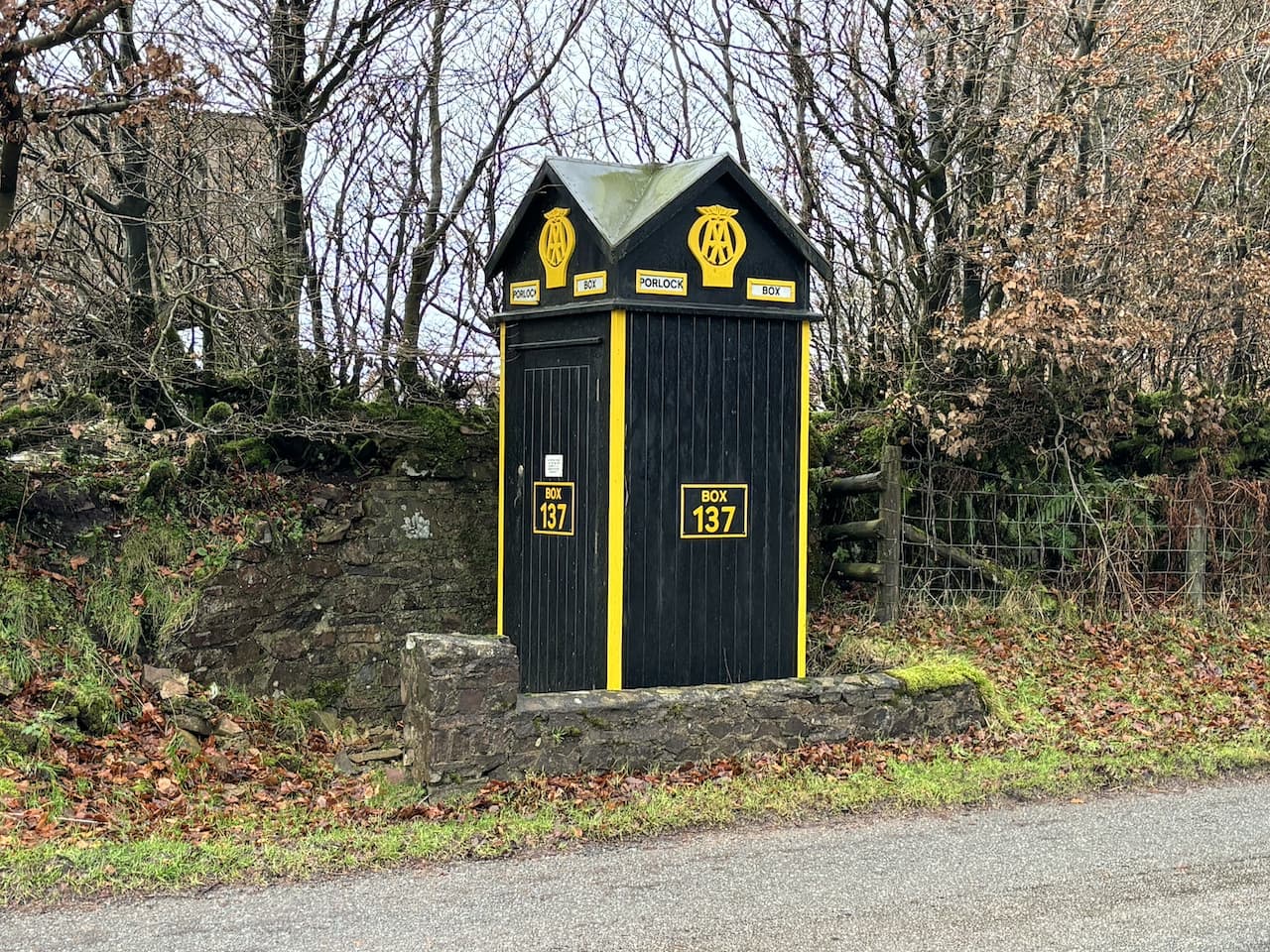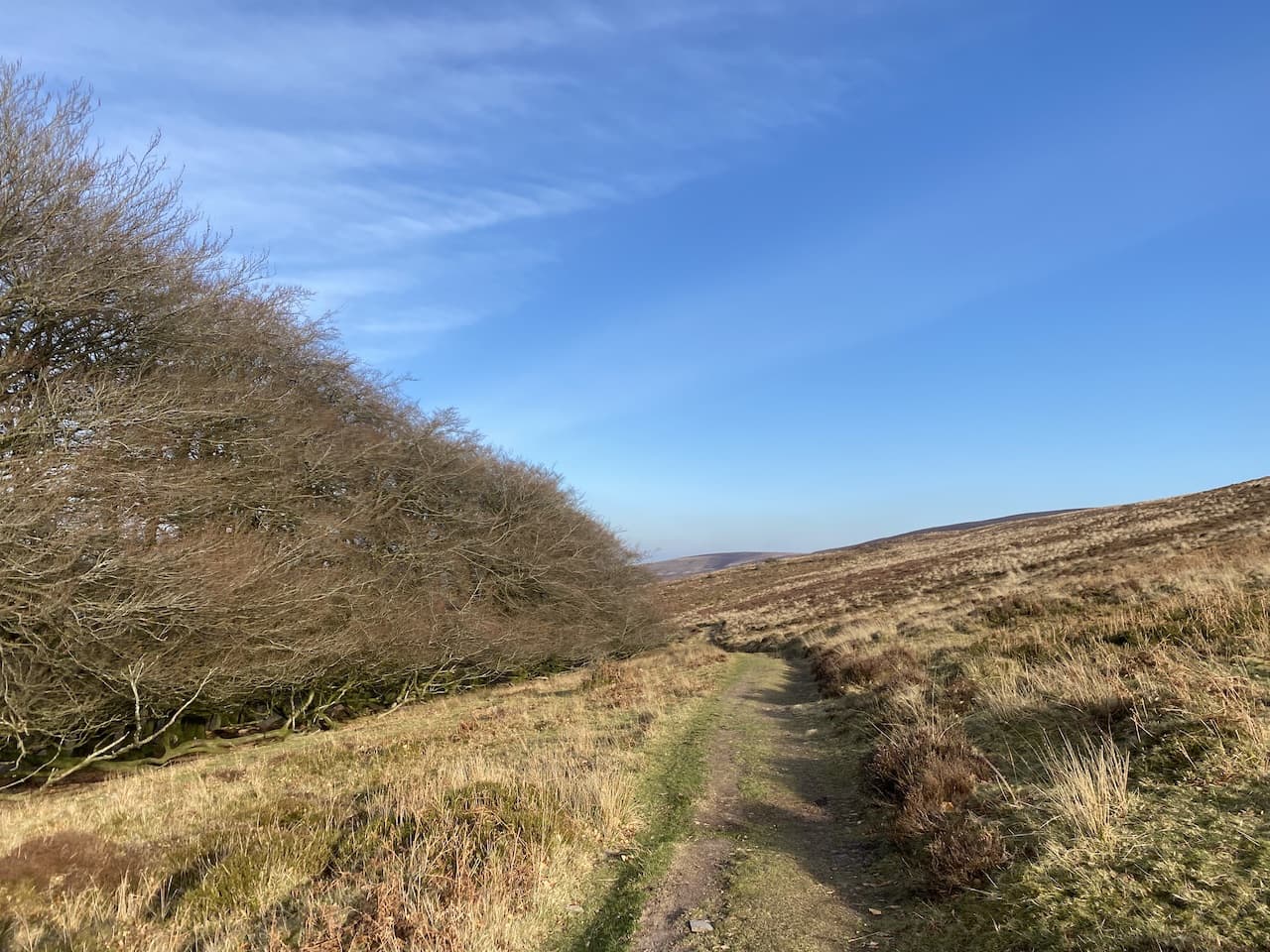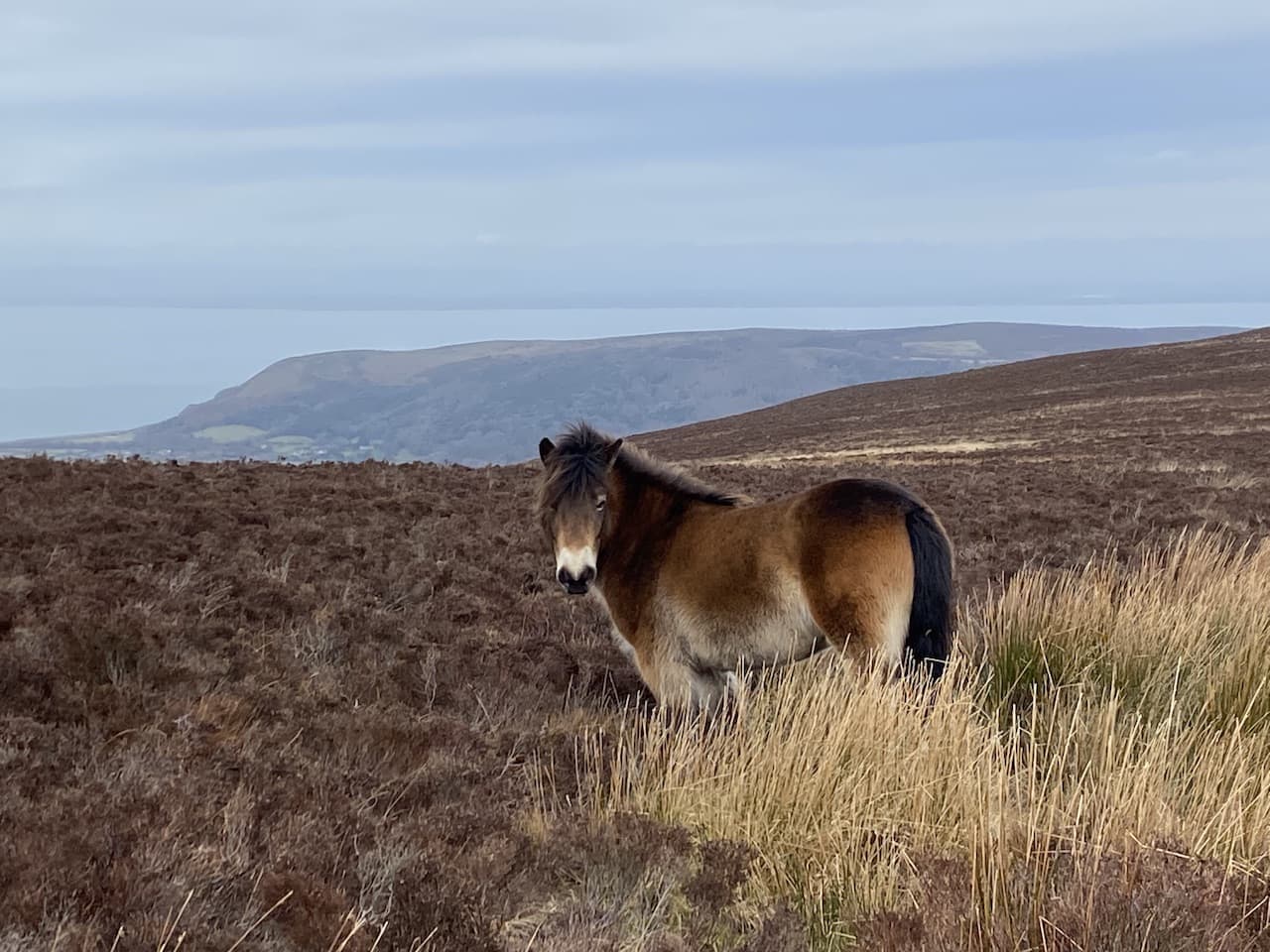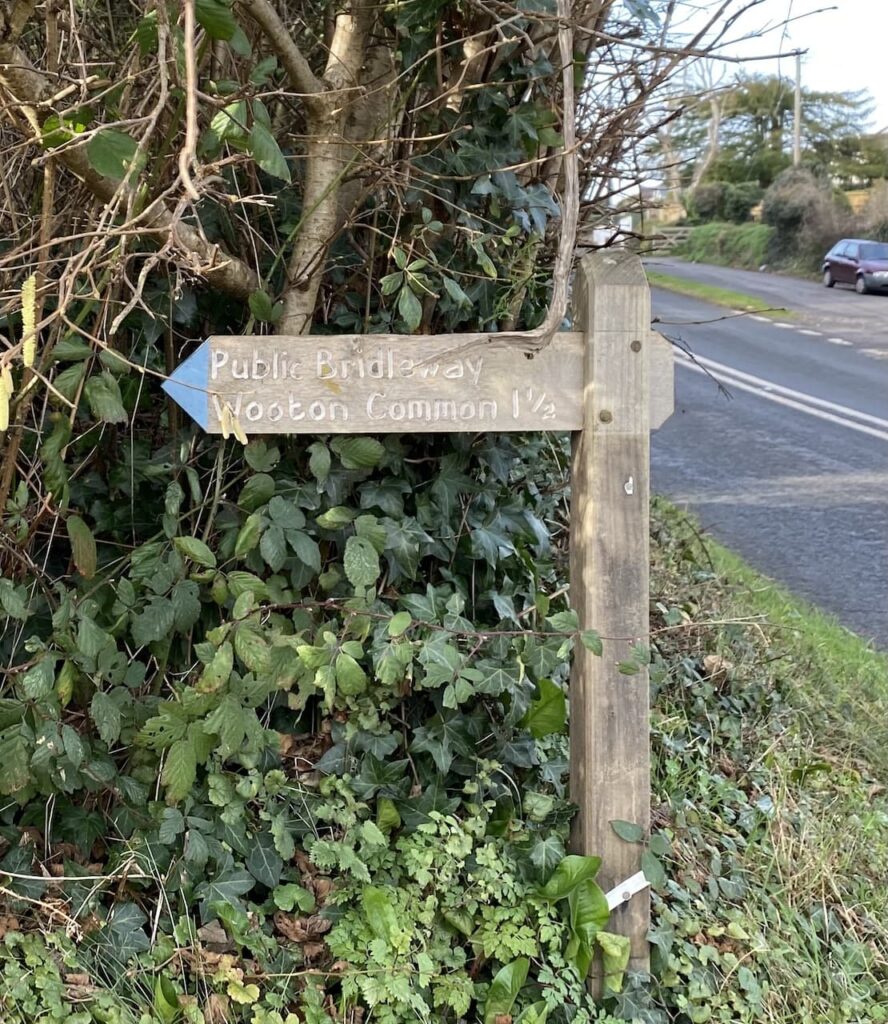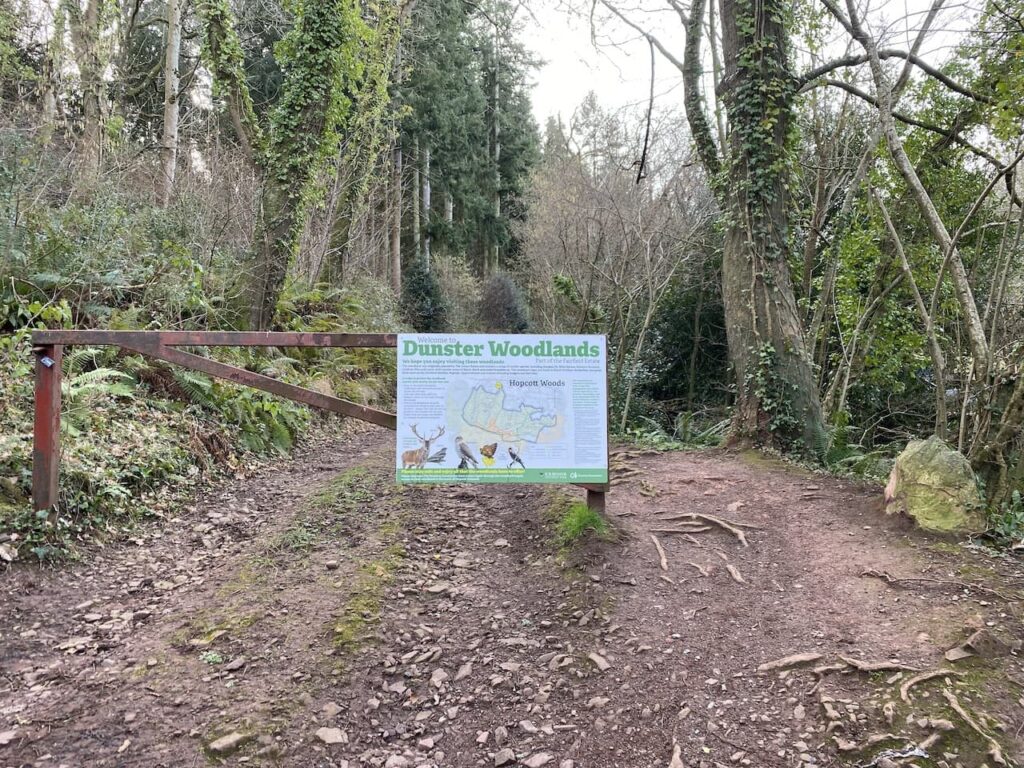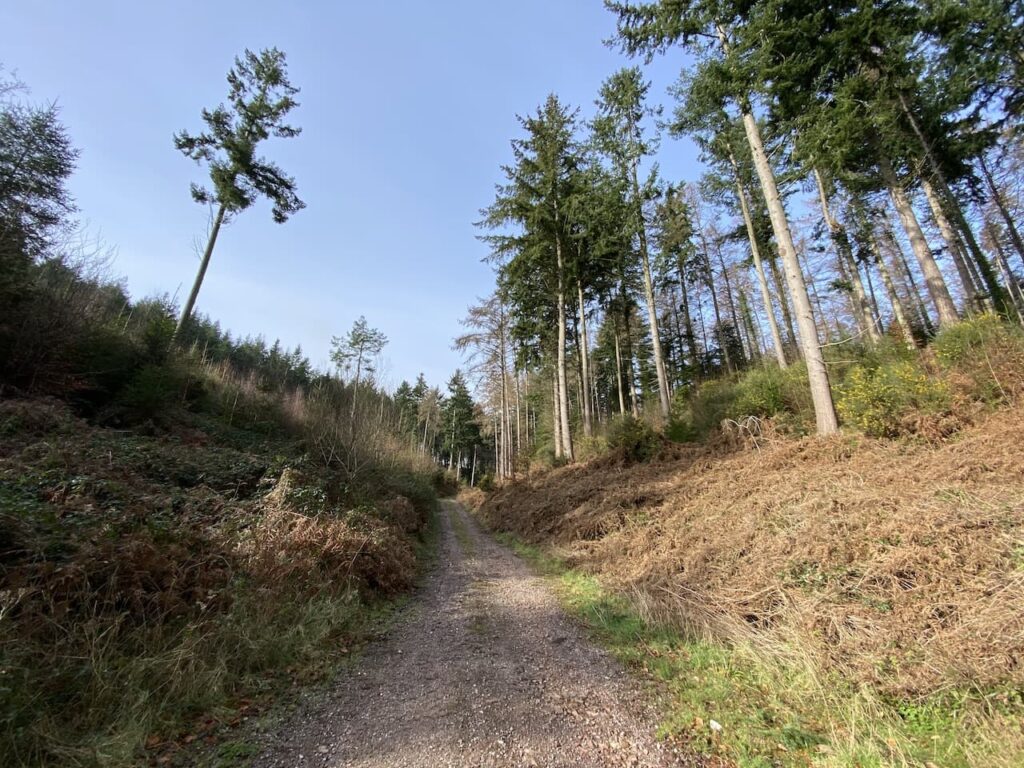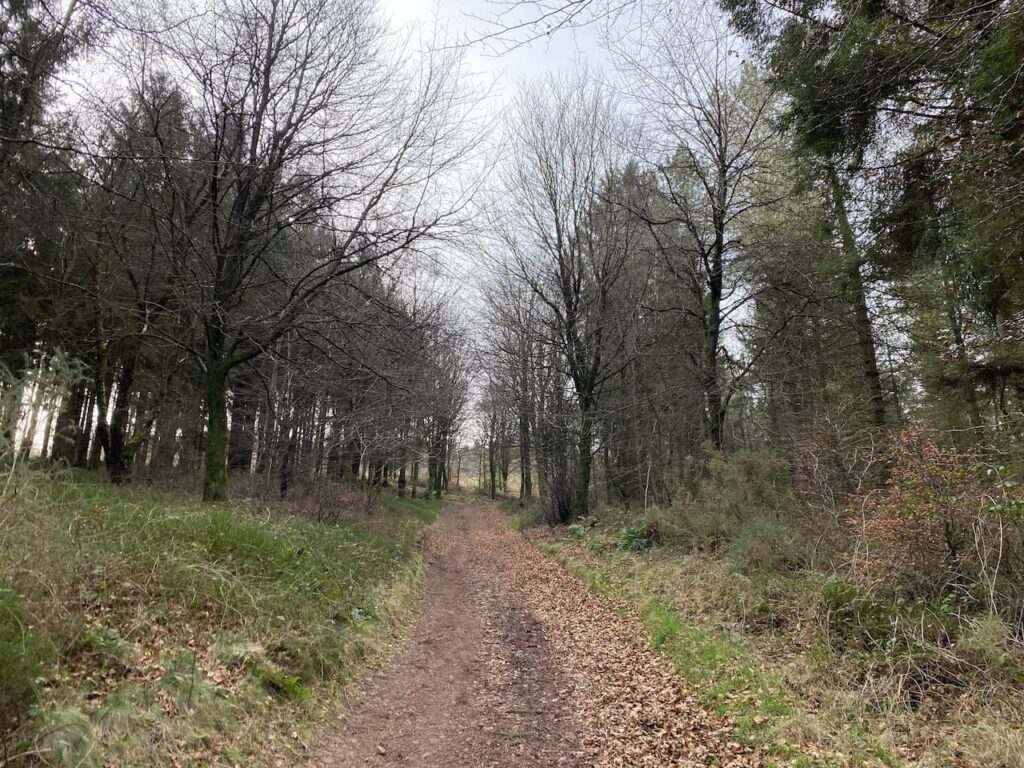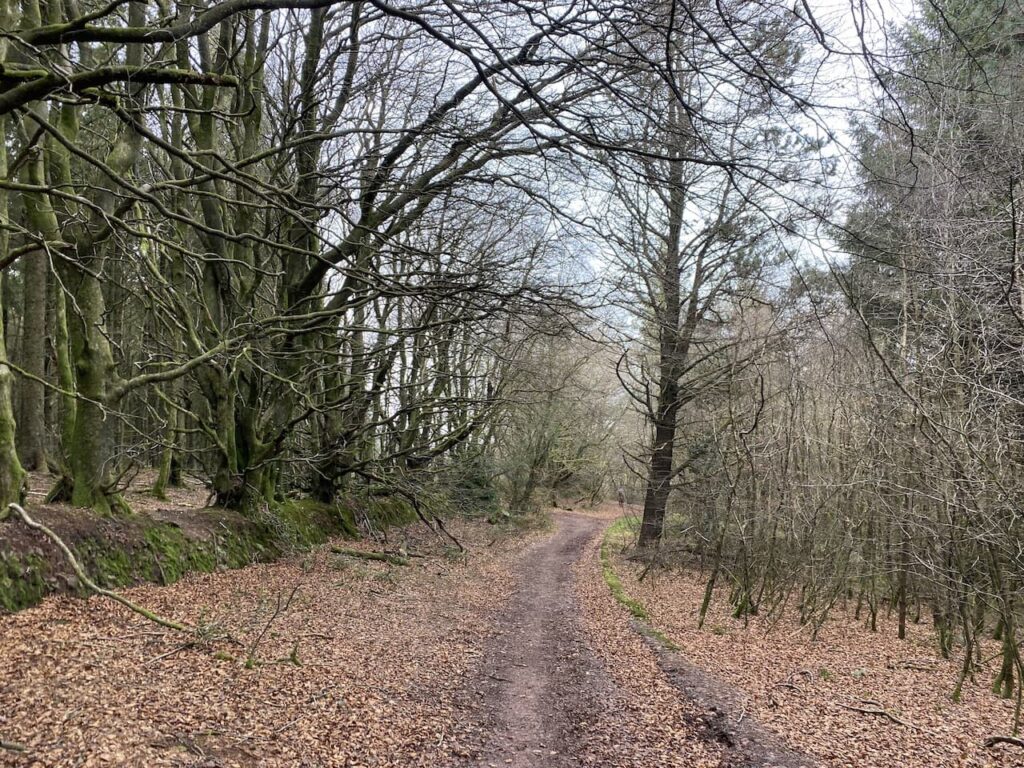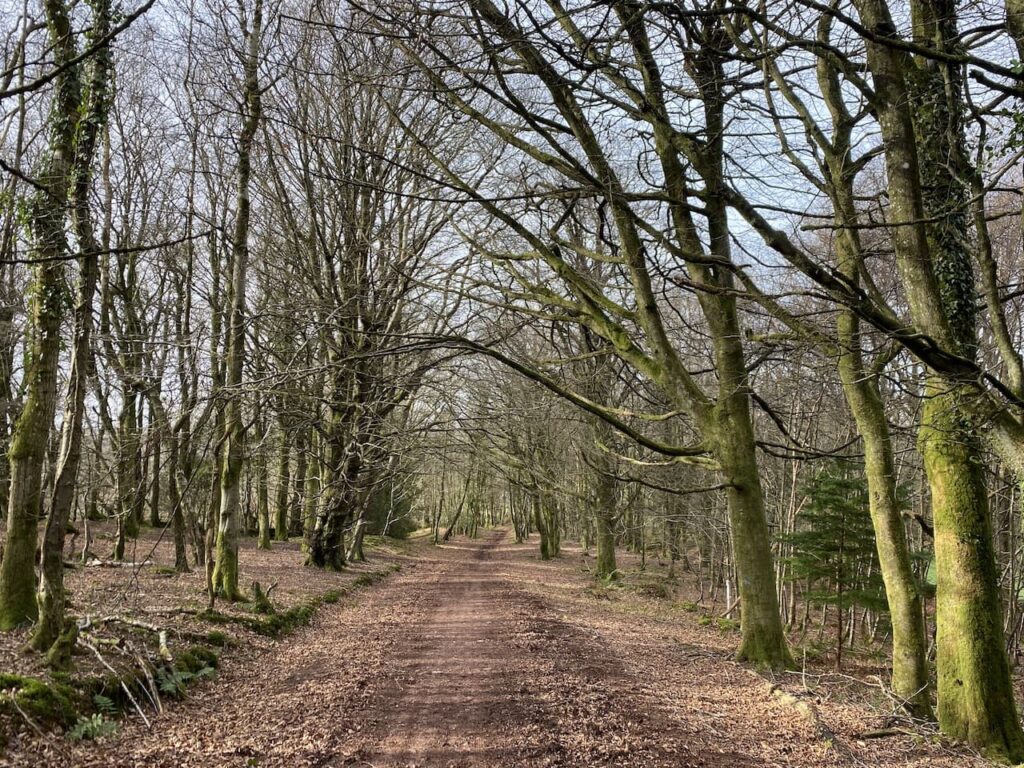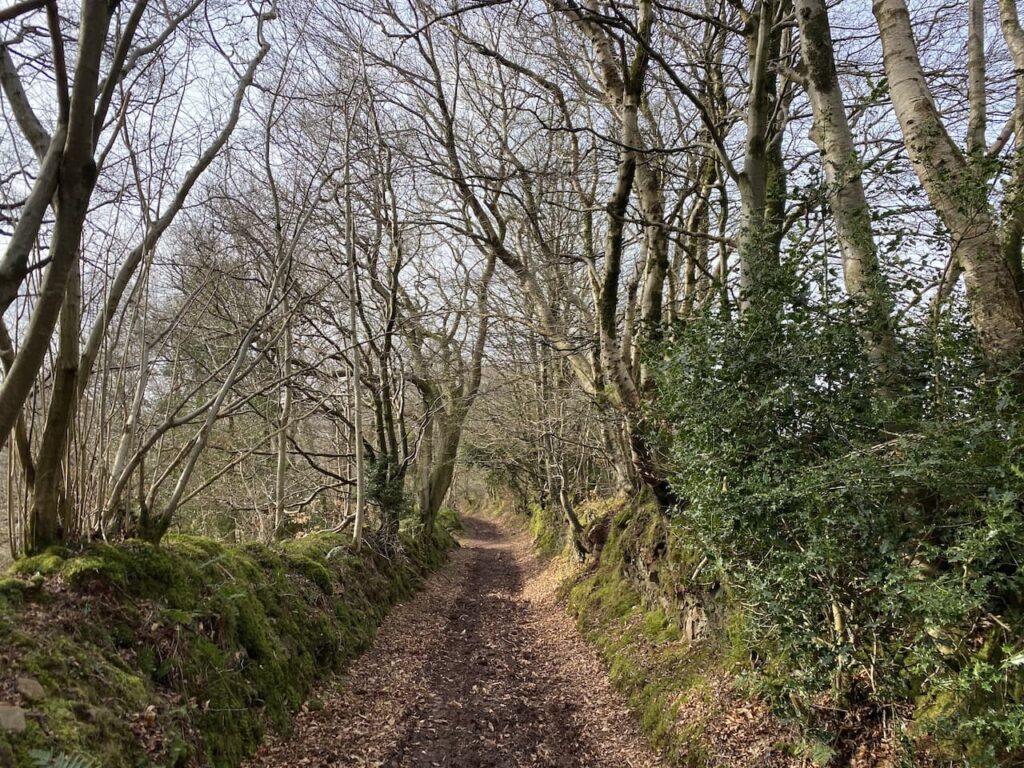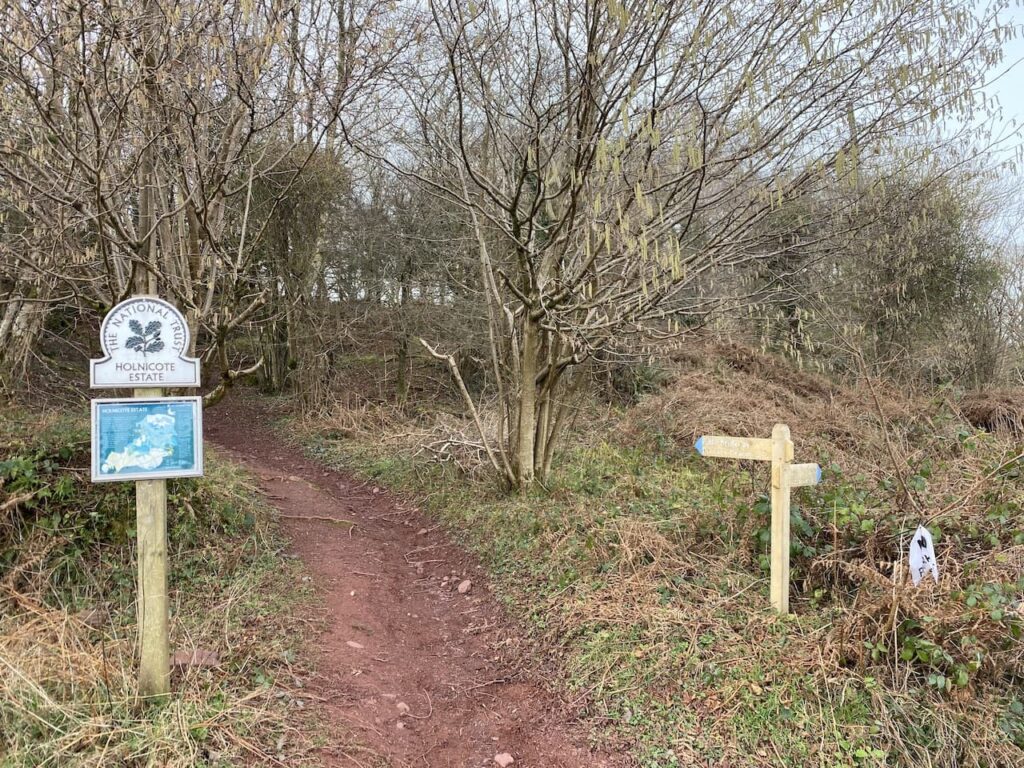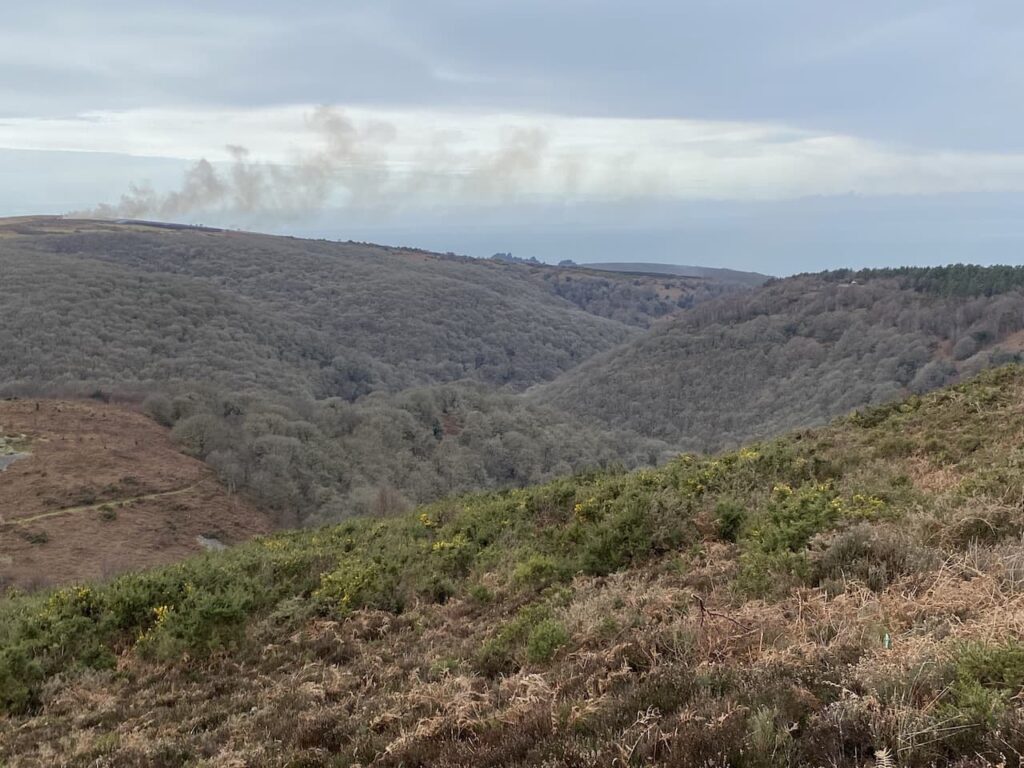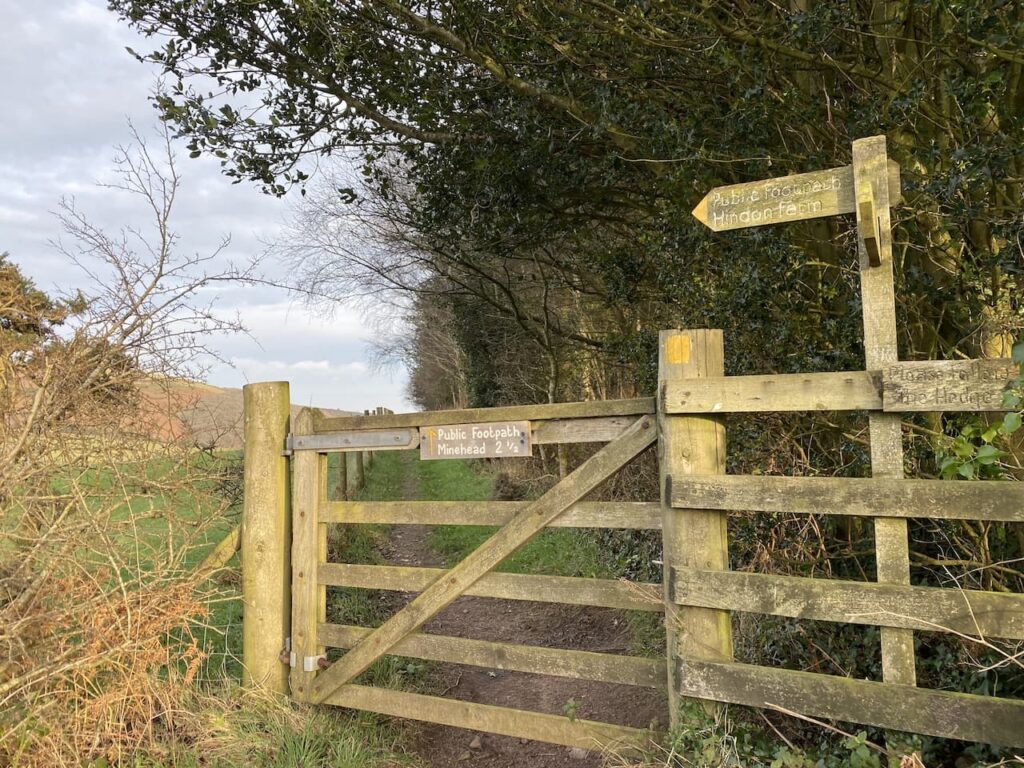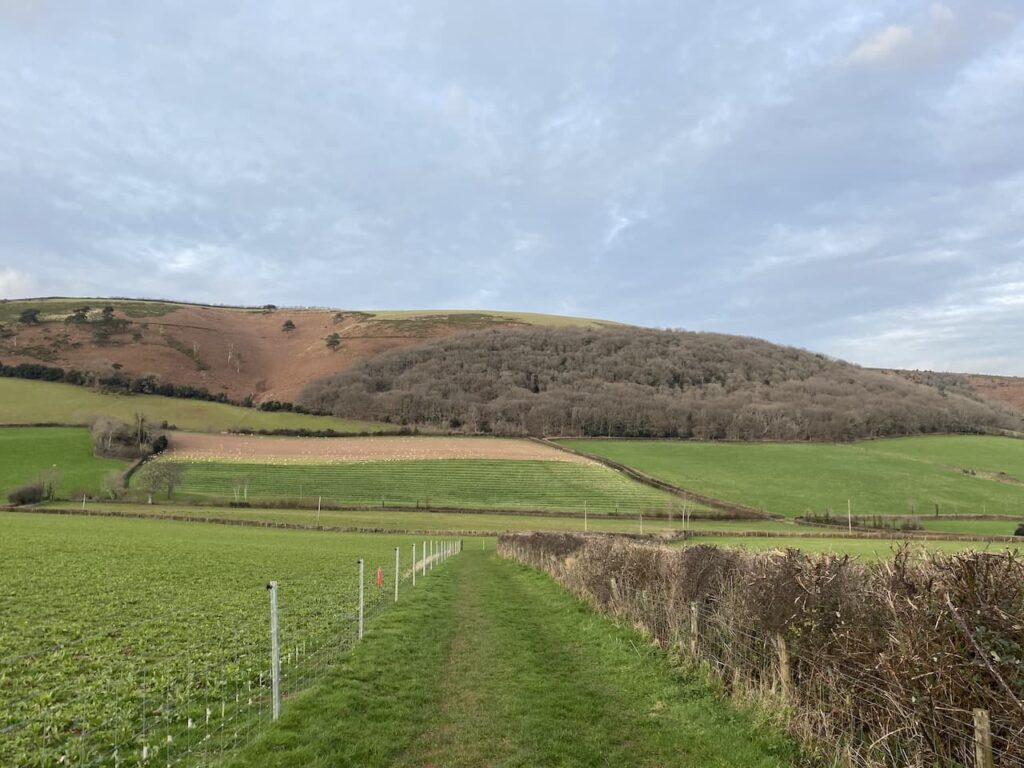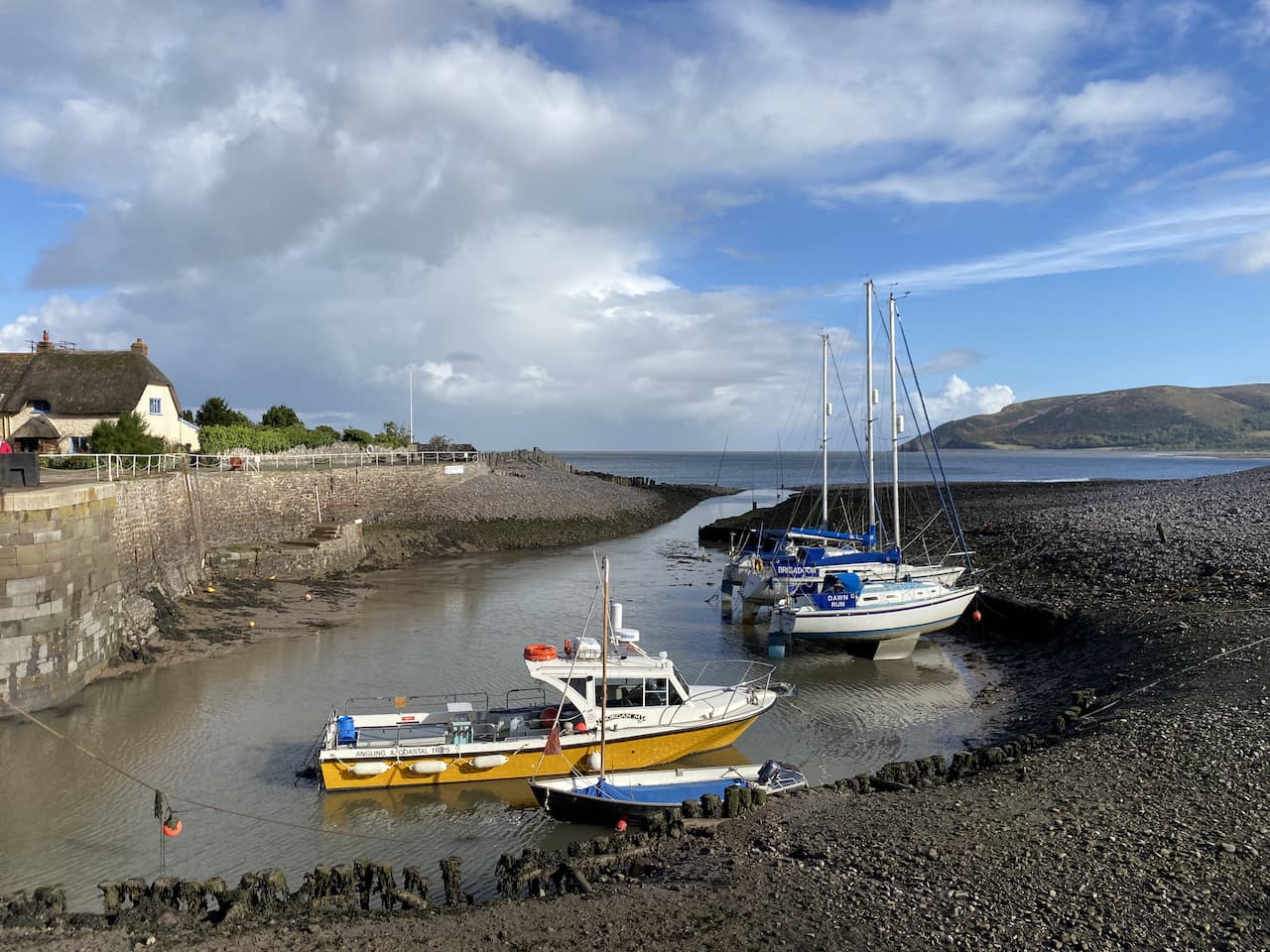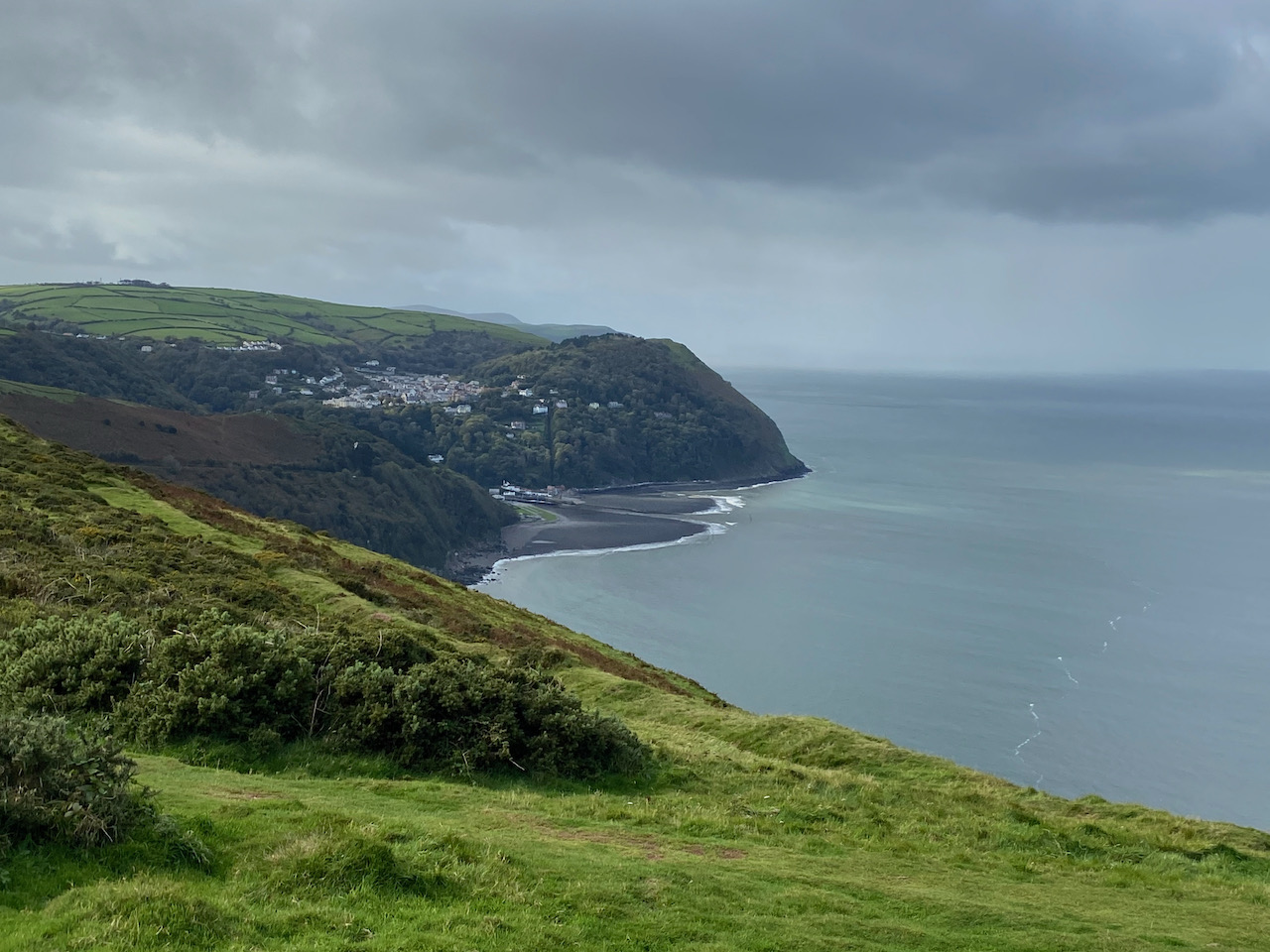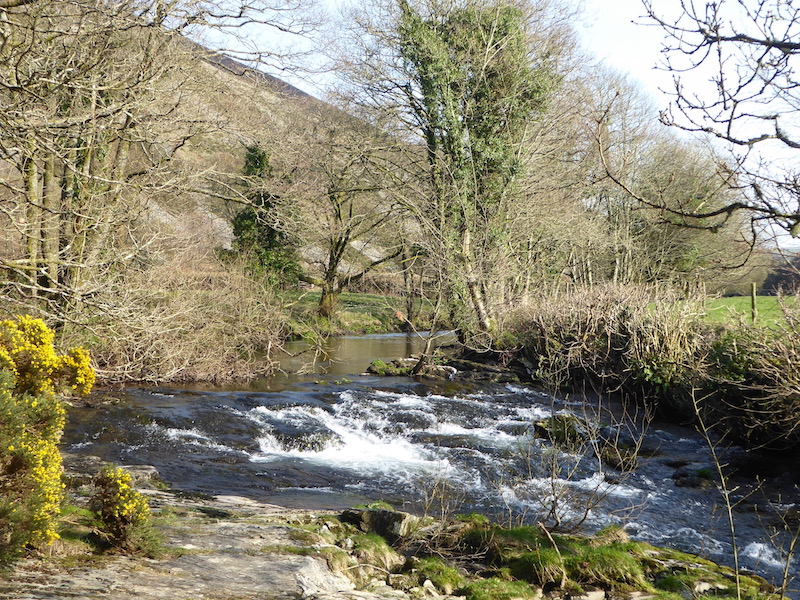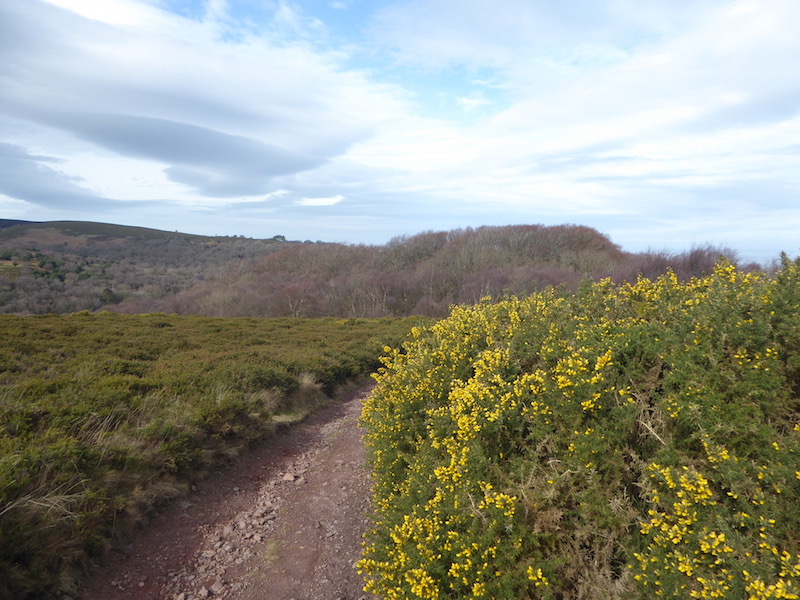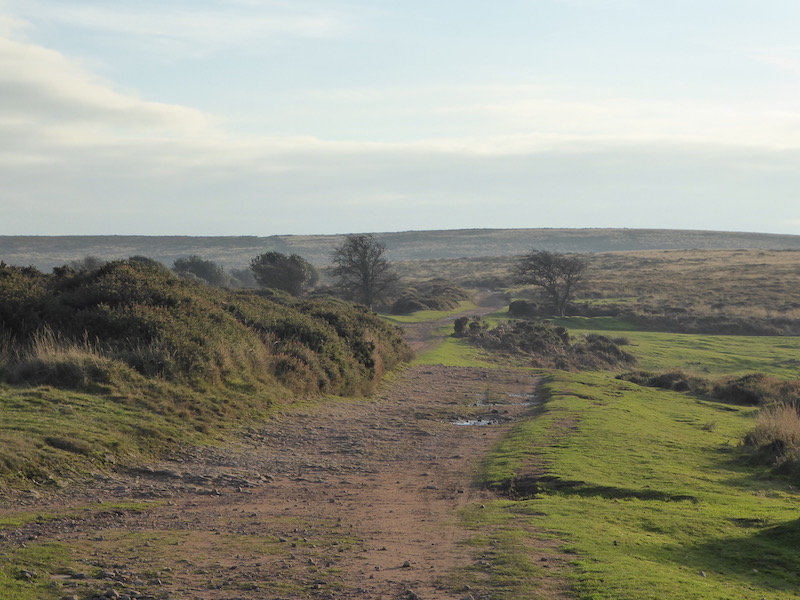Yesterday I woke to the sound of heavy rain on the roof of the caravan and the forecast showed it was set in for most of the day so I hunkered down in the van until midafternoon and then went for a wander around Minehead. The day ended with a fish and chip supper. I rarely eat fish and chips because it usually leads to a bad bout of indigestion. But unfortunately, I could not resist the temptation and today I feel decidedly under the weather. Hopefully some fresh air will improve things.
For a number of years I have had a trig point on Culbone Hill in my sights, but it involves hopping over a gate into a field which usually houses sheep so it has been off limits when Crosby has been with me, however, today I am walking solo so plan to see if I can bag it as part of my walk.
I start from the car park on Porlock Common (OS Grid Ref: SS845461). This is an exposed spot and there is a chill to the strong wind blowing across the moor as I lace up my boots and then head off west beside the A39 towards Pittcombe Head.

Close to a junction for the Porlock Hill Toll Road on the opposite side of the road sits an AA sentry box. These boxes were first installed by the Automobile Association (AA) in 1912 and were installed to be used by patrolmen as places for shelter. Later they were fitted with telephones and AA members were issued with a key so they could open the box and make a call in the event of a breakdown. When I started driving in the 1970’s I was an AA member and was issued with a key.
There were over 1,000 of these boxes installed around the country, but by 1968 the AA had started phasing them out. The once familiar roadside landmarks are now extremely rare with only nineteen remaining in their original locations.

Opposite the sentry box is a junction of bridleways, one heads north, but the one I take is a permitted bridleway heading towards Culbone Hill which runs parallel with the A39.

Despite being close to the road this bridleway is protected from the traffic by a hedge so it is a pleasant route.

On reaching a gate in the bridleway I go through and then make a detour from my route by hopping over the gate on my right and heading up onto Culbone Hill to bag the trig pillar. This is the 420th trig I have bagged.

From the trig I return to the bridleway and then cross the A39. I am now at Oare Post and here I take the minor road that heads steadily downhill towards Oareford. Out to my left there are far reaching views across Exmoor.

This is a very quiet lane and it is cracking to walk down. Soon I reach an area where there is a magnificent old beech tree hedge.

Then as I keep going down a stunning view opens up in front of me.

Gradually the road levels out and reaches a parking and picnic area near Robber’s Bridge. In the height of the summer this would be a popular spot but today there is no one else here. I pause to look at the old stone bridge dating to before1842, because it was shown on tithe maps of that time. It gets its name because this area was once known as bandit country and travel along this route would have been fraught with danger.

Just before reaching Oareford I turn right to follow a bridleway heading towards North Common which goes over the river on a wooden bridge.

This path heads steeply uphill and I am feeling decidedly under the weather and beginning to fear that I might have more than a bout of bad indigestion. So I am grateful for the excuse to stop and take in the views.

It is a stiff ascent to reach the more level ground of North Common and once out in the open a strong wind is blowing. I head north towards a copse on the horizon, I am certainly getting some fresh air but I’m not sure it is doing me any good.

On reaching the trees I turn to the right to join the Coleridge Way. I know that tucked on the western side of the trees is a bench with a cracking view, I sat here in July whilst on a ten day long distance walk. It is the ideal spot to sit and get my flask of tea out of the rucksack.

Resuming my walk I follow the Coleridge Way as it goes between the trees and a fence line.

Leaving the trees behind me I continue along the path still along the fence line before turning left towards the A39.

At the main road it had been my intention to cross and follow the Coleridge Way before heading back to my starting point via Pitt Combe, however, I am not feeling up to a couple of hours more walking. So unusually for me I look at options for shortening my route and decide to walk east along the wide grass verge beside the A39 which is the quickest route back to the car.

The side verge makes it safe enough to walk besides the road and there is not much traffic at this time of year. I stay with the road to reach the Culbone Stables Inn. This was once the point where stage coaches stopped on the route between Lynton, Porlock and Minehead. In 1962 it became a private members club then appears to have been run as pub for a while. It is now used as a shooting lodge for people visiting the Lillycombe Estate.

After passing the Stables Inn I cross the road to take a permitted bridleway on the right which runs parallel to the A39.

I follow this permitted bridleway with the hedge protecting me from the A39. To my left is woodland.

The bridleway leads me to the point where earlier I hopped over the gate to bag Culbone trig pillar. I now retrace my steps to return to the car.
My walk has covered just over 5 miles which is much shorter than originally planned. I am looking forward to getting back to the caravan and resting up for the remainder of the day.
You can view this 5.25 mile walk on OS Maps and download the GPX File Here
To follow my walk, you will need Ordnance Survey Explorer Map OL9 – Exmoor
8th December 2023
© Two Dogs and an Awning (2023)
All information on this site is provided free of charge and in good faith and no liability is accepted in respect of damage, loss or injury which might result from it. To the best of my knowledge the routes are entirely on public rights of way or within areas that are open for public access.
Walking can be hazardous and is done entirely at your own risk. It is your responsibility to check your route and navigate using a map and compass.
